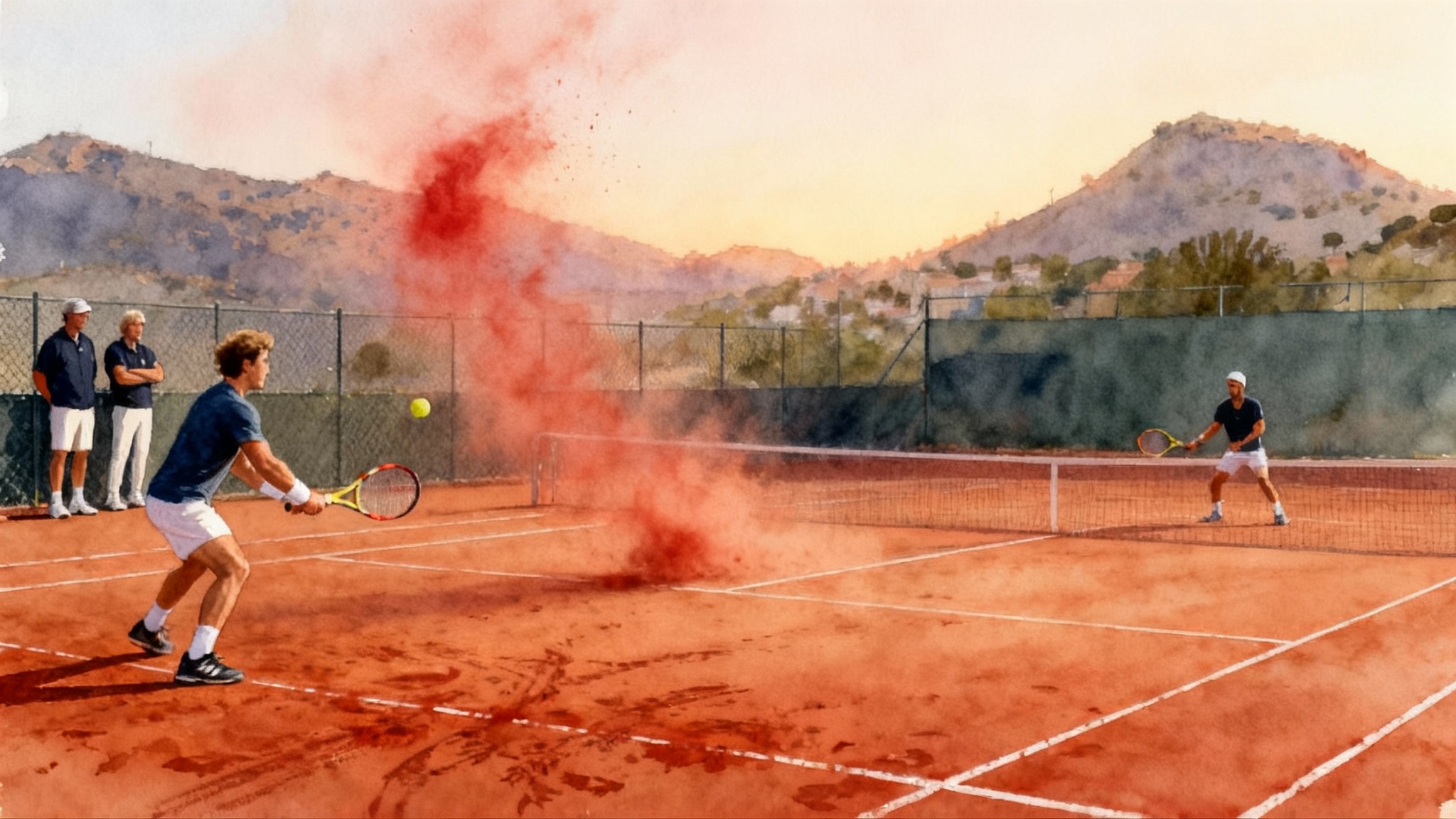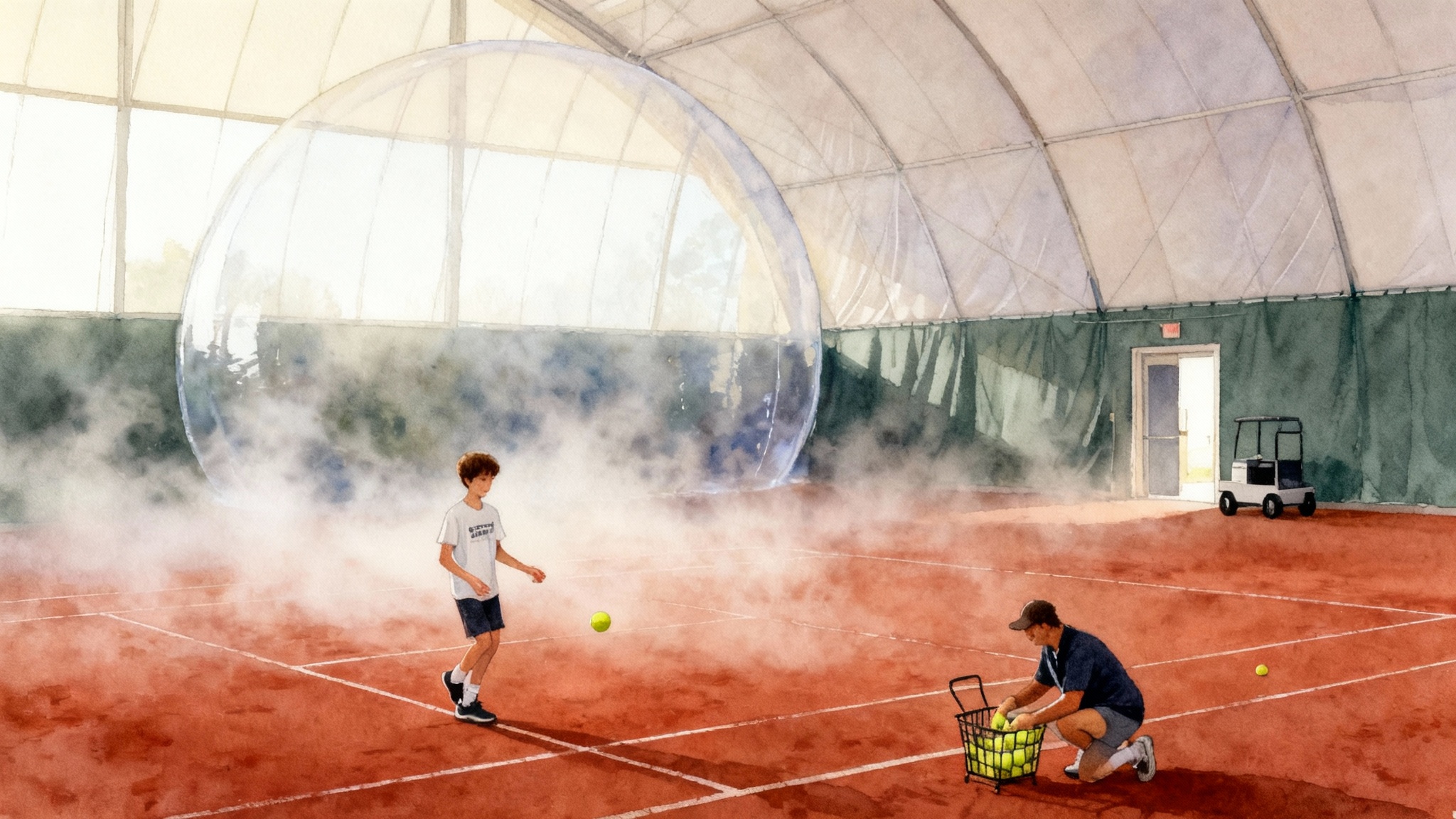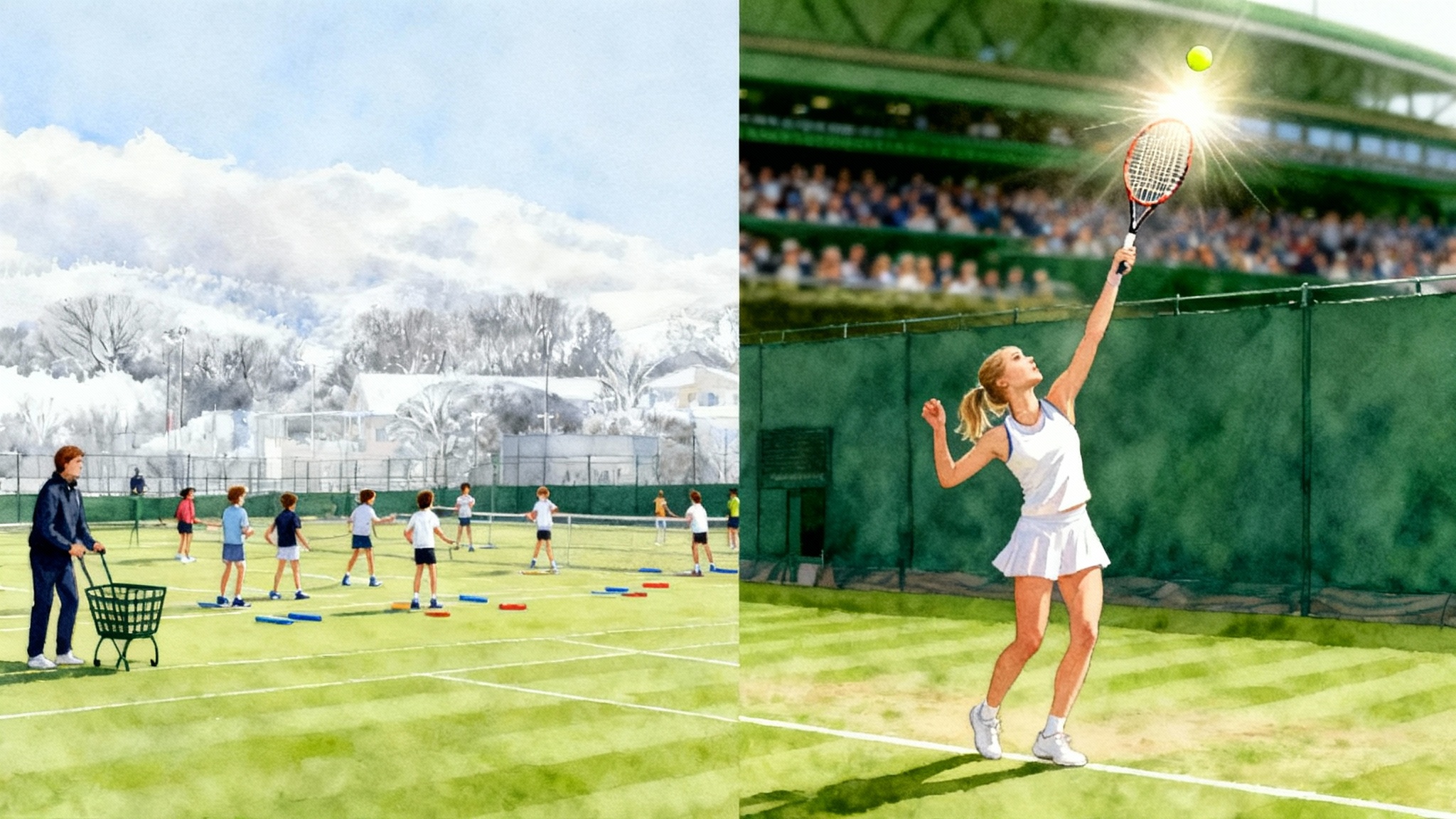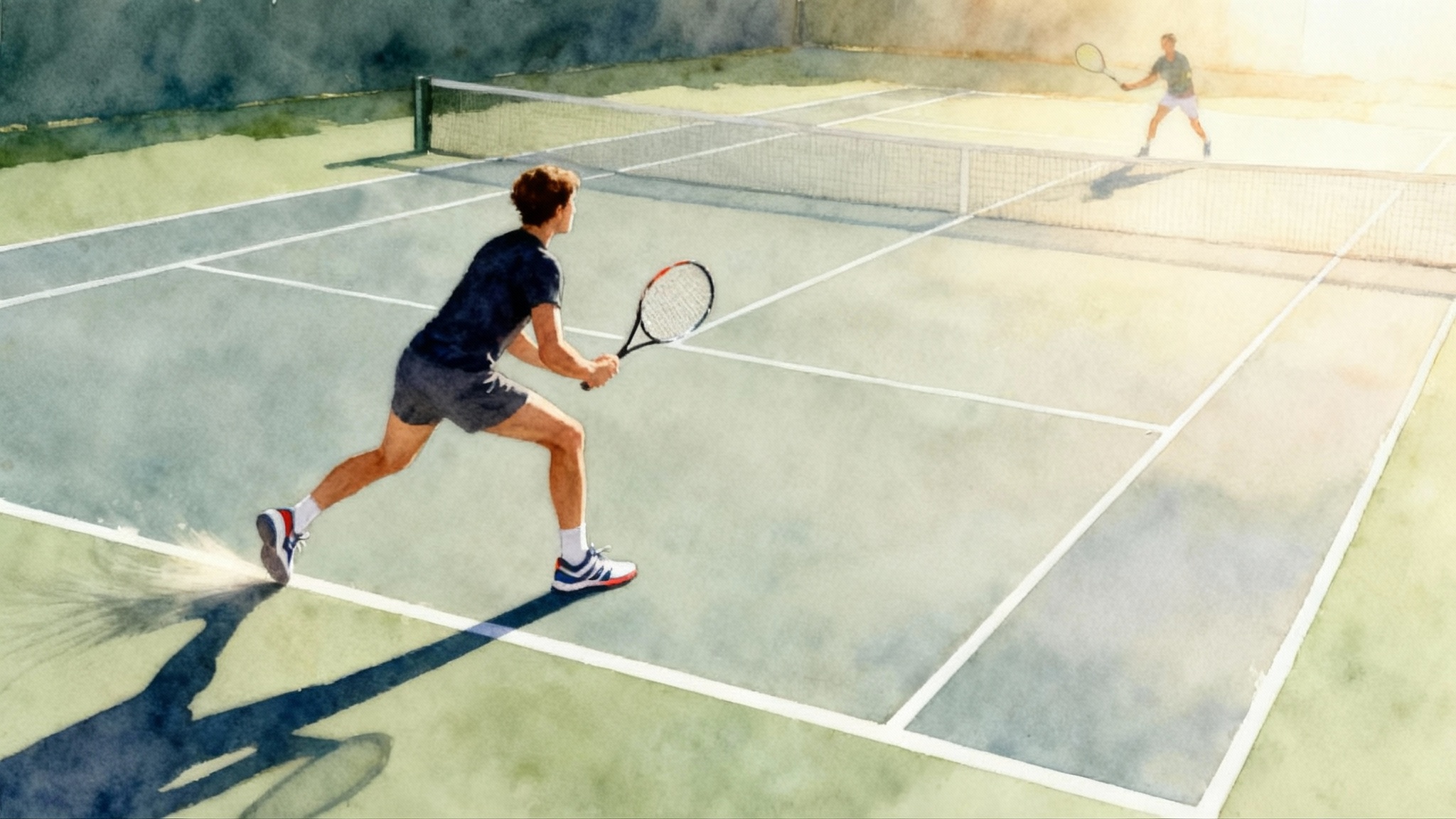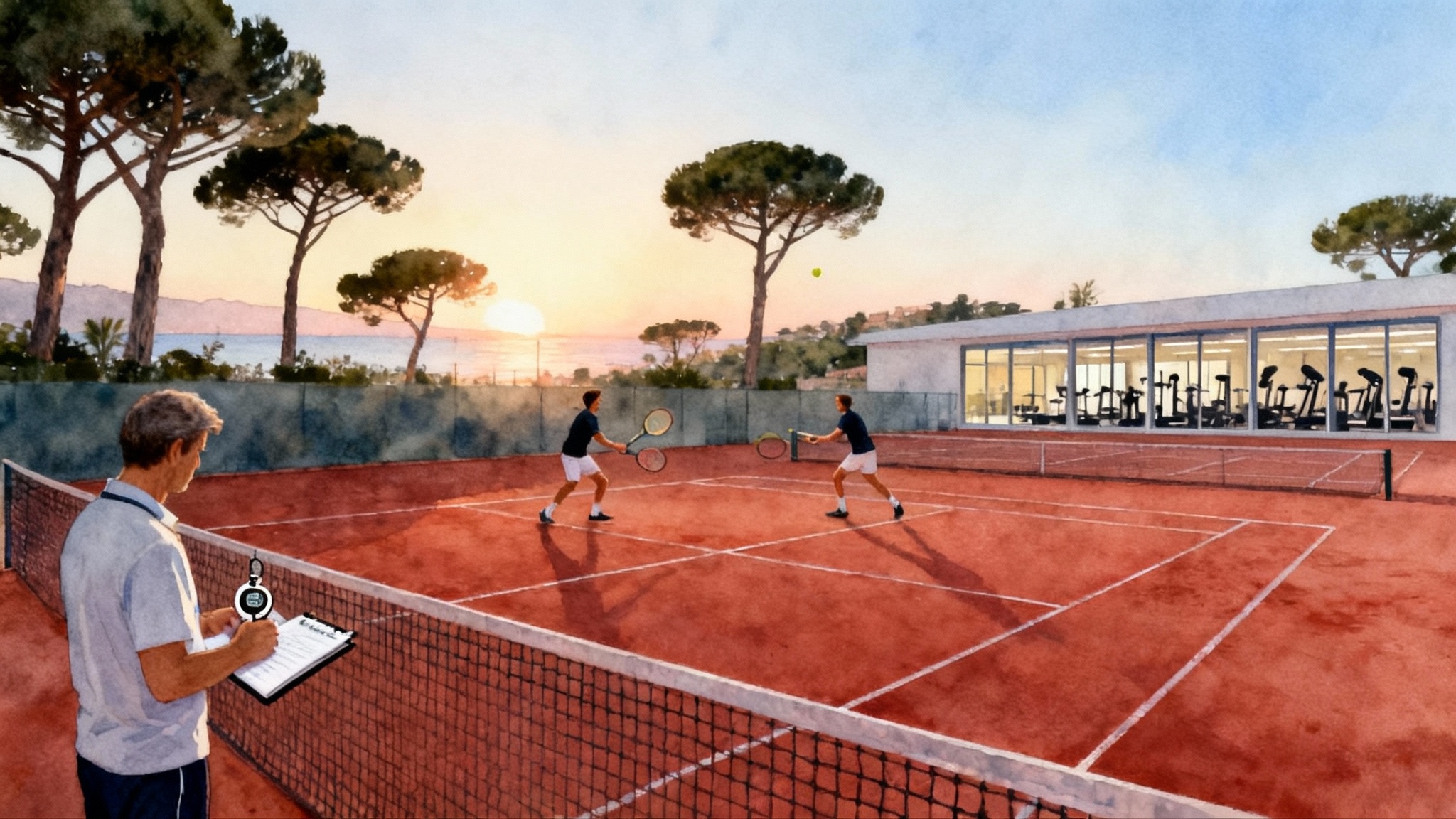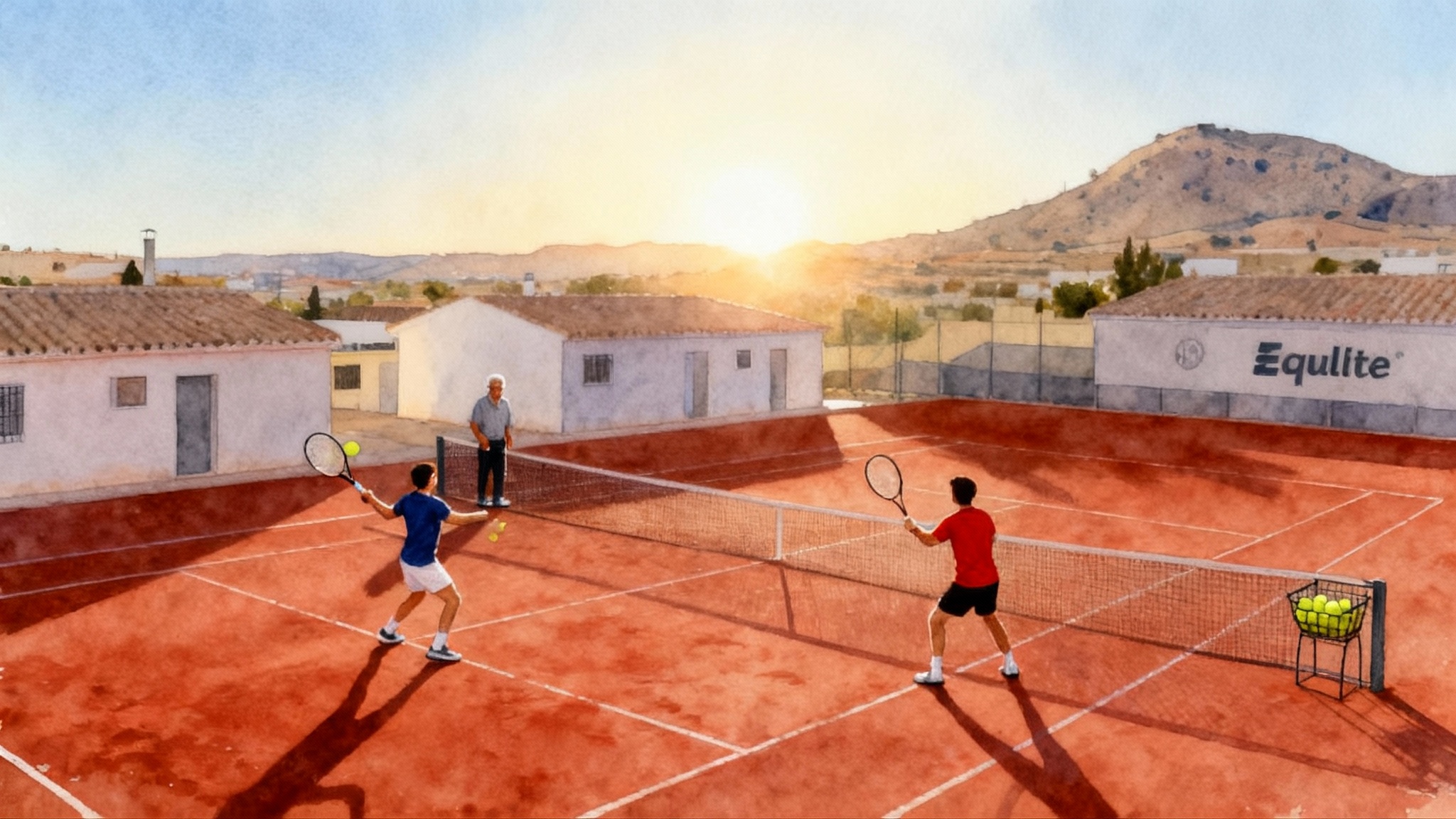Delray to Riviera: How Mouratoglou and USTA Boca Built Coco Gauff
Coco Gauff’s rise did not come from one campus or one coach. It came from a hybrid model: Champ’Seed-backed training blocks on French clay at Mouratoglou, day-academy resources at USTA Boca, and a steady family base in Florida.
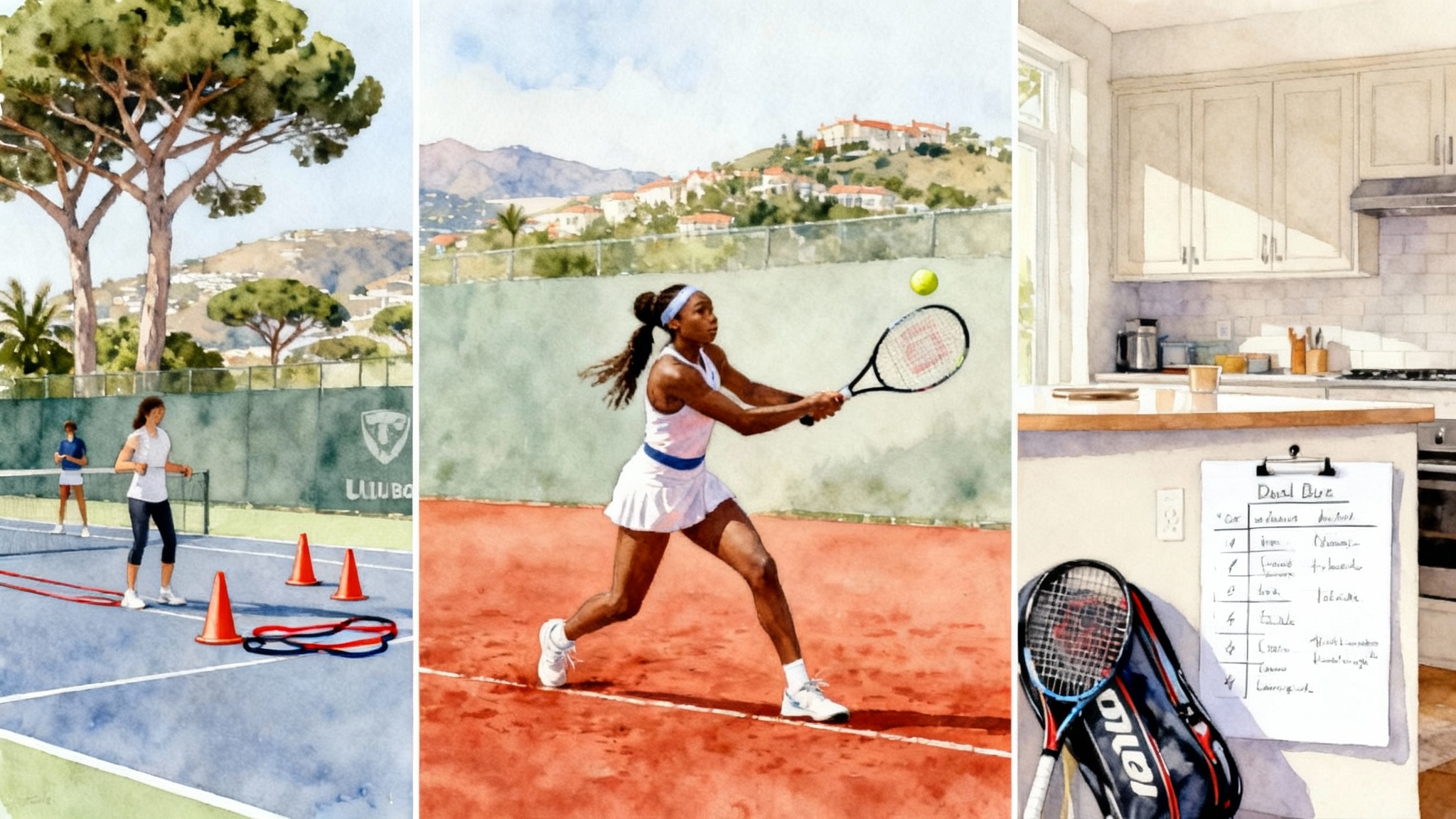
The path that blended two worlds
Coco Gauff’s journey was not a straight line from one famous academy to a first major title. It was a braided path. One strand was European: red clay, slower ball, and long rallies at the Mouratoglou Academy on the French Riviera. Another strand was American: the United States Tennis Association’s Player Development hub in Boca Raton, faster courts, match-play volume, sports science, and tournament access. The third strand never left home: a family-led base in Delray Beach that kept school, recovery, and values intact.
The result was a teenager who could both chase down eight-ball rallies on clay and take time away from opponents on hard courts. That hybrid foundation showed up in New York in September 2023 and kept paying dividends across 2024 and 2025, when Gauff turned deep runs into a new normal.
Why France at 10 mattered
Gauff first entered the Mouratoglou orbit at age 10, supported by the academy’s Champ’Seed foundation. The academy itself notes that she joined the program after being identified at a young age, returning for regular blocks to prepare on clay and sharpen core habits that would anchor her pro game later on. Mouratoglou documents this early link and Champ’Seed support.
Why is a European block so powerful for an American junior? Clay slows the ball and lengthens points. That forces a young player to learn how to build rallies rather than fish for quick winners. On clay you must manage space, not just speed. The surface rewards four skills that became central to Gauff’s identity:
- Movement patterns that recover to the middle quickly and at a balanced height rather than sprinting and stopping.
- Neutral rally tolerance, which teaches a junior to hold a good ball for one extra shot instead of over-pressing.
- A return of serve that starts with reading toss and contact rather than guessing, because the slower bounce gives you time to rehearse the right first step.
- Transition choices that respect score and ball height. On clay, a bad approach gets punished, so juniors learn to approach behind depth, not hope.
Two drills illustrate the difference:
- Sideline box pattern: drop a cone box three feet inside each singles line. Players must land the second shot of every point into a box before they can change direction. It hardwires patience and depth.
- Return plus three: return to the big rectangle crosscourt, then play three neutral balls before a green light. That builds early discipline on the return.
Boca Raton as the American layer
While European blocks laid technical and tactical foundations, the United States Tennis Association’s Boca Raton center made the game faster and sharper. In Boca, juniors see more servers who hit harder and take the ball early, especially on hard courts. They also get structured match play, analytics, and physical testing.
You can think of Boca as a wind tunnel for emerging pros. It accelerates failure loops. When a player attempts a new return position or a new serve target on a Tuesday, they can test that idea against three different styles by Friday. That density lets athletes stress-test ideas quickly and iterate.
The key is that Gauff did not board full-time. She used day-academy access and camps, then went home to a stable base in Delray Beach. That balance matters. Instead of living in a dorm, she slept in her own bed, ate at her own table, and worked through homework with her family. The emotional cost was lower, and the training quality was still high.
The family base that glued it together
At home the Gauffs did three smart things that parents can copy without big budgets:
-
Built a home performance hub. A mini whiteboard in the kitchen with the week’s training block, a mobility checklist on the fridge, and a Sunday night debrief. Simple tools, high accountability.
-
Preserved recency. If Tuesday’s session identified a forehand spacing issue, Wednesday’s first twenty minutes attacked the same pattern. Small problems did not linger.
-
Kept public courts alive. Delray’s parks gave Gauff a place to rehearse without the feeling that every session had to be perfect. That takes pressure off and keeps joy in.
How the hybrid showed up in matches
Watch Gauff in New York in 2023 and you see a player who can switch gears within a point. Long neutral rally on ball three. Then a fast, line-taking backhand on ball five. Then a cover to the short angle on ball seven. That is clay patience mixed with hard-court punch. It is the hybrid speaking.
The other big tell is the return. Gauff’s first step reads the toss. Her split-step timing lands just before contact, and she often takes the return higher than many peers. For a deeper breakdown of this skill, see our guide to split-step timing that wins points. On second serves she moves forward, not because of bravado but because the footwork pattern was rehearsed for years in drills that began on slower clay.
From 2024 into 2025, the same elements deepened. The serve action kept evolving, her legs won her defending points on tired days, and her baseline patterns matured. When the backhand crosscourt locked in, the down-the-line change of direction opened the court. The result was a steadier week-to-week floor. Even when the peaks were not spectacular, the lows were not costly.
Coaching shifts as strategic checkpoints
A coaching change is not just about a new voice. It is an admission that the current inputs will not close a specific performance gap quickly enough. Gauff’s most visible checkpoint came in the summer of 2023, when Spaniard Pere Riba was joined by Brad Gilbert. The partnership sharpened tactical clarity and match management and accompanied a title run through Washington, Cincinnati, and New York. The United States Open’s own report explains how Gilbert initially consulted alongside Riba and how the roles evolved during that stretch. USOpen.org details that mid-summer collaboration.
For parents, the lesson is not to chase famous names. It is to time changes to problems. Use a three-part test before shifting coaches:
- Define the gap: write one sentence that describes the tennis problem in objective language. Example: “Second-serve return points won under 40 percent for three months.”
- Map the lever: determine whether the gap is technical, tactical, physical, or mental. If two of the four are involved, sequence them. Fix contact point first, scouting second, for example.
- Set a horizon: give the current team 8 to 12 weeks with measurable goals. If the curve does not bend, trial a specialist for a defined block. That might be a serve technician for two weeks, or a match-play consultant for one event.
The Gauff timeline shows that a short, well-defined consultation can unlock a larger shift when the athlete is ready. It also shows that teams evolve. Assistant coaches, data analysts, and biomechanics specialists can rotate in and out as the player’s needs change.
Building a schedule without full-time boarding
Parents often assume that living at an academy is the only way to build elite habits. Gauff’s path shows another route. You can blend European blocks, American day-academy access, and a home base if you plan. For a European case study on how clay foundations transfer to hard courts, see Rafa Nadal Academy powered Ruud.
A sample twelve-month calendar for a 13 to 16 year old might look like this:
- January to March: American base. Two local tournaments a month, one travel event. Keep school stable. Introduce a weekly return-of-serve constraint day. For example, play two sets where every return must land crosscourt deep or the point restarts.
- April to May: Two to three weeks on European clay. Pick one academy, one coach, and one skill theme. Avoid coach tourism. The skill theme could be point construction or defensive footwork. Finish with a local clay event in Europe.
- June to July: Home block plus American summer swing. Use consecutive weeks of competition to stress-test what was learned in Europe. Insert a seven-to-ten day rest window between clusters.
- August to September: One North American hard-court peak. If the results are trending upward, add a stretch goal event. If not, protect confidence with a level drop.
- October to November: Second European block or an American clay block if travel is tough. Again, choose one theme. For example, second-serve aggression on return.
- December: Off-season at home. Two planned rest weeks. Introduce speed mechanics and serve pattern projects.
A schedule like this keeps the academy experience as a tool, not an identity. The player remains a student and a family member first, which often protects long-term motivation.
Practical drills you can steal
- Return lanes: tape a three-foot lane down the deuce side and a three-foot lane down the ad side. For two sets per week, all first-serve returns must land in the lane. This builds aim under pressure.
- Serve plus exit: after every serve, the server must recover to a defined exit cone, then split. It reduces ball watching and improves readiness for the first ball.
- Clay-to-hard transfer: play ten minutes of pattern play on a softer ball or slower court, then immediately repeat on a faster court. Same pattern, higher speed. This links patience to pace.
Budgeting the hybrid model
European blocks sound expensive. They do not have to be reckless. Here is a budget-minded approach:
- Short blocks over long stays. Two two-week trips can be better than one five-week stay. The player learns, comes home, applies, then returns to upgrade.
- Negotiate off-peak weeks. Post-slam weeks at major academies can be cheaper and less crowded, which means more court time and coach attention.
- Share specialists. Two families can split the cost of a video analysis day or a biomechanics assessment. Ask for deliverables on video with slow-motion annotations.
- Keep fitness simple. A resistance band kit, a jump rope, and a timed shuttle protocol cover 80 percent of junior needs when traveling.
Mistakes to avoid
- Boarding by default. Moving a 12 or 13 year old full-time to an academy can accelerate burnout. Use day-academy slots and short camps instead.
- Coach tourism. Switching coaches every month breaks feedback loops. If you trial a new voice, define the block and the outcome in advance.
- Tournament mileage chasing. Points are not development. If the player is learning to win 50 percent of backhand exchanges at neutral rally speed, a smaller event may be more valuable than a bigger badge.
- Vague goals. “Be more aggressive” is not a goal. “Raise second-serve return contact by six inches and land 60 percent deeper than the service line” is a goal.
What parents can copy from the Gauff blueprint
- Build a two-surface year. Schedule clay weeks to teach patience and spacing. Schedule hard-court weeks to speed up decisions and returns.
- Use three-month sprints. Every quarter, pick one technical and one tactical theme. For example, forehand spacing and crosscourt first-strike patterns. Track them weekly.
- Borrow coaches, do not worship them. Invite a specialist to solve one problem. Keep the family base as the constant.
- Make the return the team project. The return touches every point. Devote two sessions per week to return patterns, not just forehand or backhand mechanics.
- Protect the person. Maintain a school plan, friends, and rest days. A happy teenager learns faster than an exhausted one.
The takeaway for academy directors
If you run a U.S. day-academy, build formal bridges to a European partner for short clay blocks. Share player notes back and forth so the themes stay consistent across oceans. U.S. models like JTCC’s blueprint for Tiafoe show how day-academies can thrive within a larger network. If you run a European academy, create two-week U.S. swing prep modules that include return-of-serve circuits, serve plus first-ball patterns, and hard-court movement cues. The message is simple: be part of a player’s year, not their entire life.
A final word
From Delray’s public courts to the Riviera’s red clay to the fast lanes of Boca, Coco Gauff’s rise came from mixing environments with purpose. The European blocks taught patience and problem solving. The U.S. day-academy system added speed, match volume, and resources. The family base turned all of that into a sustainable rhythm.
Parents do not need to copy the exact map. They can borrow the logic. Choose environments for what they teach, then stitch them together with a home base and a clear plan. That is how a junior becomes a pro who can suffer through long points on Tuesday and take time away from the world No. 1 on Saturday. It is also how tennis stays joyful while getting serious. The hybrid path is not a shortcut. It is a smarter road.
